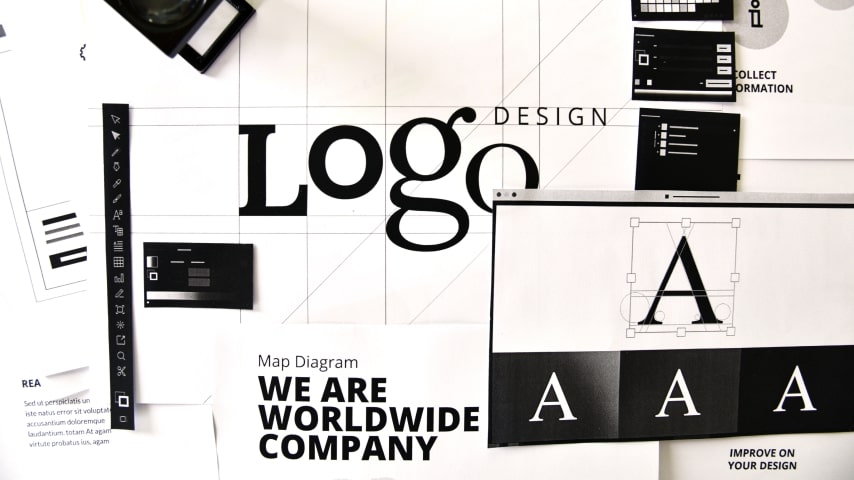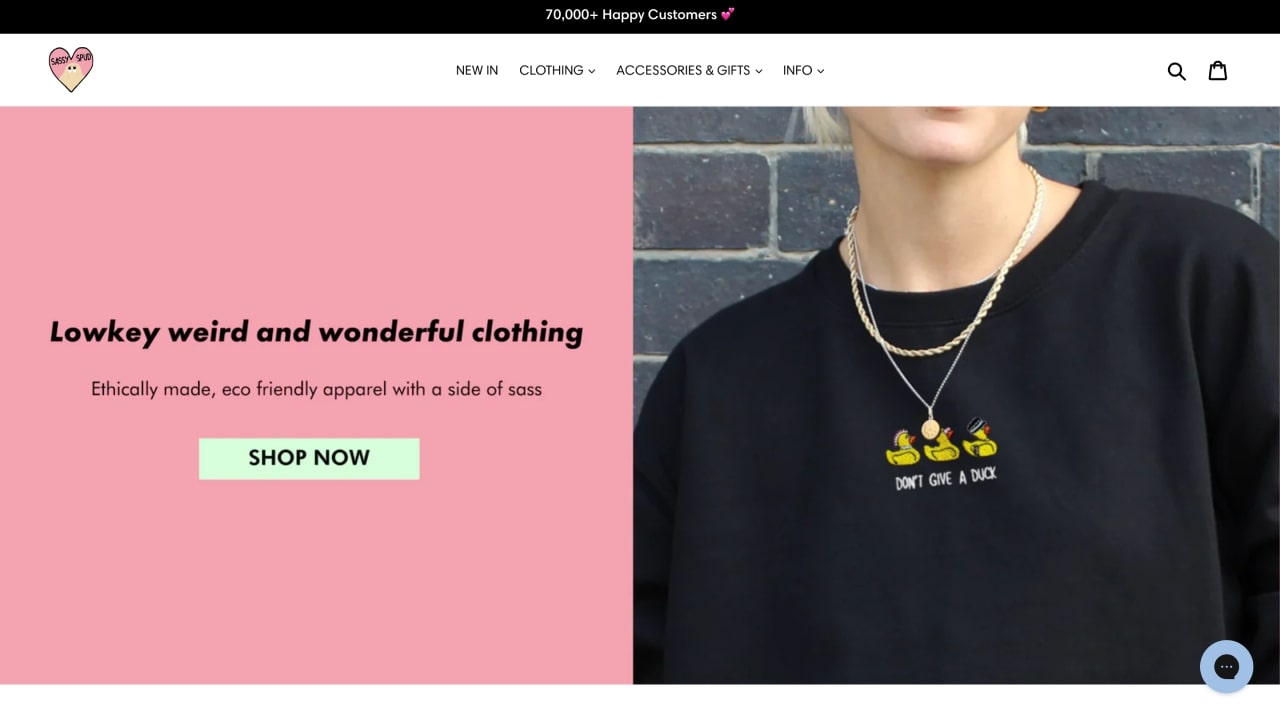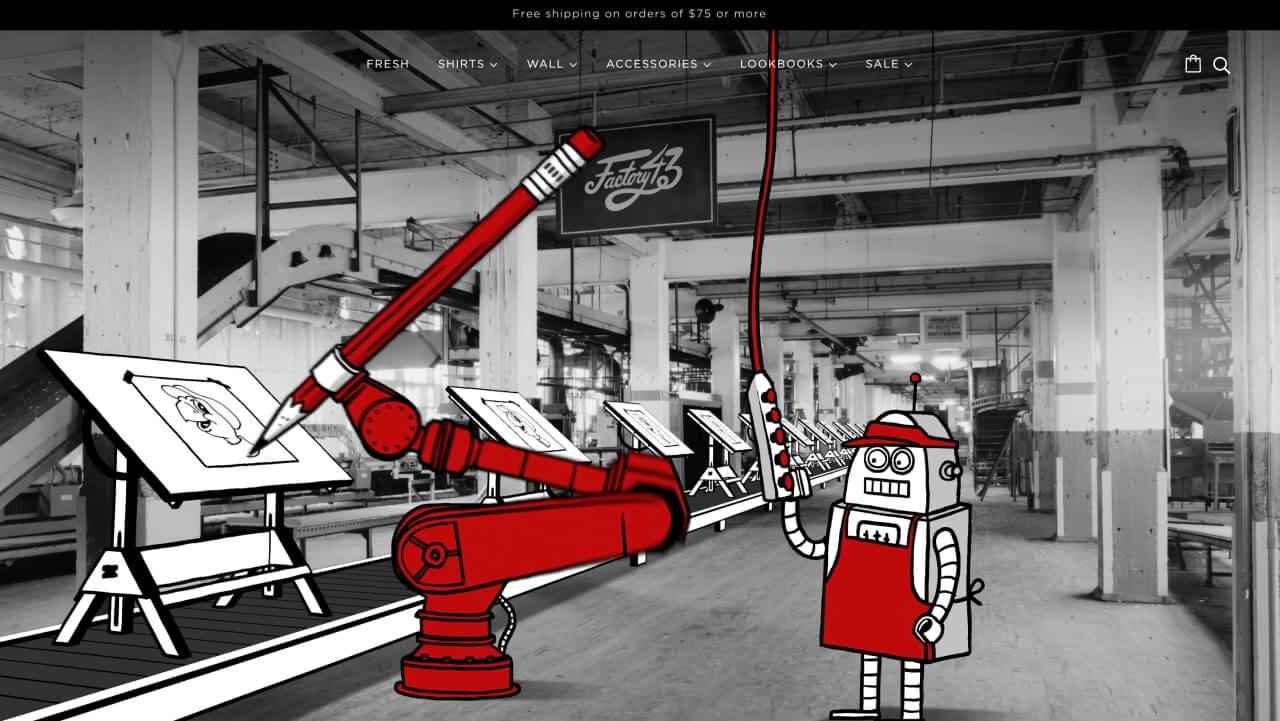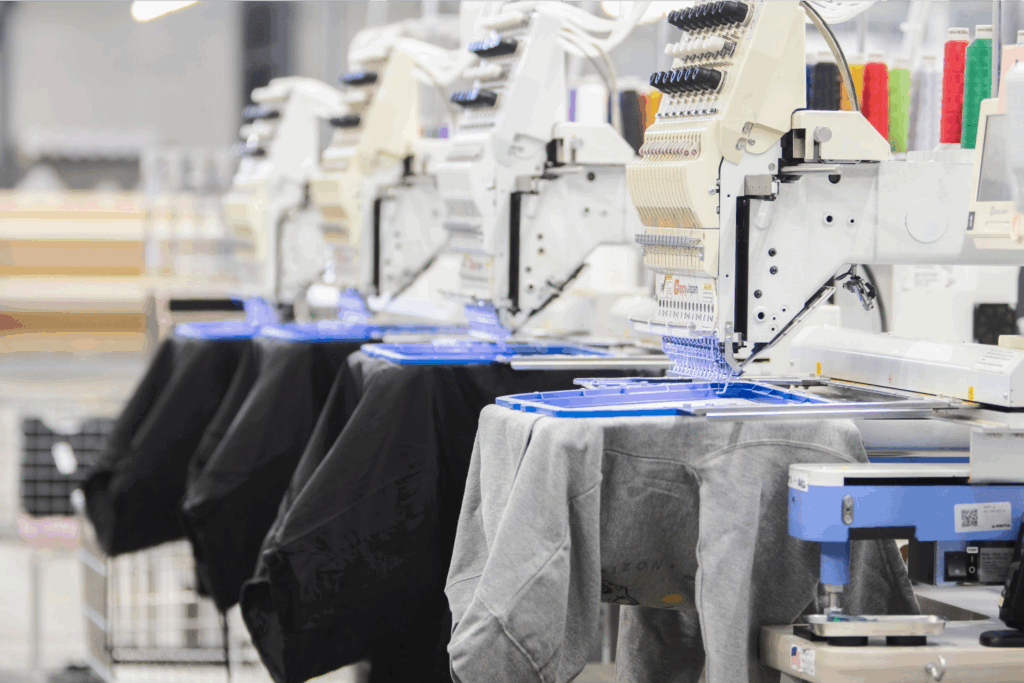Sell custom products without inventory
With the print-on-demand business model, anyone can start selling shirts online without inventory or storage space. It’s much easier than you think, and we’ll guide you through the whole process.
Find out how to sell t-shirts online without inventory, including how to start an online store, design t-shirts, choose a sales channel, and market your business for success.
This post may contain affiliate links, which means we may earn a commission if you make a purchase through those links. This comes at no additional cost to you.
Key takeaways
- The print-on-demand business model lets you sell t-shirts online without managing physical inventory, storage space, or shipping.
- Printify’s Product Creator makes it easy to design custom t-shirts using features like AI, pattern tools, and Shutterstock integration.
- Select the right sales channel to build your online store and reach your target audience. Consider eCommerce marketplaces like Etsy and Amazon or platforms like Shopify and Wix.
- Promote your online t-shirt business through social media, SEO, email marketing, and content creation to attract customers and grow your brand.
- Gather customer feedback, analyze performance metrics, and expand your product offerings to adapt and scale your business.
Choose Print on Demand for fulfillment
Print on Demand is a convenient eCommerce business model that lets you design, create, and sell clothing online without inventory. Customers pay for the product after you make a sale, so there are no upfront costs.
This method is beginner-friendly and the perfect way to learn how to sell merch without inventory.
Once an order comes in, a print-on-demand company, like Printify, handles everything from printing to shipping.
Check out success stories of Printify merchants to gain inspiration for starting your own t-shirt brand.
Start an online t-shirt business today!
Select and design t-shirts online

When selecting t-shirts, keep your customer in mind and carefully consider their preferences.
Our Catalog has a large selection of t-shirts in various styles from customer-favorite brands like Bella+Canvas, American Apparel, Champion, and Next Level.
Select your favorite, click Start designing, then use our free Product Creator (formerly Mockup Generator) to upload or create your own design from scratch.
Check the best print-on-demand t-shirts on our blog.
Why you’ll love our Product Creator:
- Quickly create designs with the AI Image Generator.
- Unlock a vast selection of visuals with Shutterstock.
- Make custom t-shirts with all-over print designs using the Pattern tool.
- Choose from many free fonts in our text editor.
- Create more professional designs with the background removal tool.
Check out our graphic design tips! If you have design ideas but don’t have time to bring them to life, hire a professional designer from sites like Fiverr.
Pick a sales channel
Choosing the right sales channel is vital for gaining customers when starting an online t-shirt business. While there’s no best place to sell shirts online, some platforms might be more suitable for your product than others.
Base this choice on your needs, technical know-how, and the type of audience you want to reach.
eCommerce marketplaces
Quickly open an online store, publish your product listings, and sell online to a broad, established audience on eCommerce marketplaces.
Although they offer a quick setup, you won’t have much creative freedom or control over the store’s design and overall branding.
Each marketplace has its own fee structure, so compare these before choosing.
A few great options:
eCommerce platforms
Build an online clothing store using pre-designed templates in just a few clicks and have complete control over your online business branding. eCommerce platforms offer useful built-in features, analytics tools, and payment options.
The setup process requires more effort than marketplaces, and most eCommerce platforms have subscription fees.
Explore these popular platforms:
The Printify Pop-Up Store is a great option if you want to sell products online without inventory, fast.
With built-in checkout and payment features, you’ll get a unique store link that integrates automatically with our print-on-demand services.
If have the know-how, consider our Printify API to develop custom functionality and automate workflows for your online store.
Take a look at the best sites to sell online to learn about the advantages, disadvantages, and features of these sales channels.
Market your t-shirt business

Selling shirts online without inventory isn’t just about setting up shop – you need a strong marketing strategy to make sure people find your store!
Beyond taking online courses or joining an affiliate program, consider these methods to promote your online t-shirt business and make money online.
Social media marketing
Creating content on social media platforms is a great way to expand your reach without any upfront investment.
Build a strong presence on various platforms like Instagram, Facebook, and TikTok. Post high-quality t-shirt photos, share videos, promote special deals, or run contests to generate interest and build a loyal following.
If you have the budget, try paid ads to promote your online store.
Search engine optimization
Search engine optimization (SEO) improves your store’s visibility in search results to gain traffic.
Utilize these best SEO practices:
- On-page SEO. Make sure your website has a quick loading speed, easy navigational structure, mobile-friendly interface, and high-quality content. Use tools like Ahrefs to find relevant keywords for product titles and descriptions.
- Off-page SEO. These are tactics you apply outside of optimizing your own website or eCommerce store. Backlinks, guest posts, social media marketing, and brand mentions help search engines see your store as trustworthy.
Check out our guides for WooCommerce, Shopify, Wix, and Etsy to learn more about SEO for specific sales channels.
Content marketing
Posting valuable, relevant, and high-quality content regularly helps increase your visibility on search engines. It’s a great way to build trust and credibility to help you sell shirts online.
Create articles, tutorials, reviews, or videos that weave in product marketing and relevant keywords. Don’t forget to share your content on social media platforms and in emails for maximum exposure.
Search engine marketing
This involves placing paid ads for your online store on search engine results pages.
When a person types a specific keyword, your store will appear as a top search result. While this method requires a budget, it’s a quick way to drive traffic to your store.
For example, Google Ads can help you reach a wide audience on its search engine and partner platforms by placing ads in results, apps, videos, and non-search websites.
Email marketing
Email marketing is a cost-effective way to advertise. Industry experts forecast that revenue from email marketing worldwide will reach $17.9 billion by 2027 thanks to its effectiveness.
Let people know about deals, discount codes, and new t-shirt designs on your online store. Use tools like MailerLite and Mailchimp to create, manage, automate, and measure the effectiveness of your email campaigns.
Learn how to create a mailing list with our step-by-step guide.
Start an online t-shirt business today!
How to sell shirts online without inventory: 6 Tips for success
While starting your print-on-demand t-shirt business, consider these factors to improve your chances of success.
1. Know your t-shirt design niche
Set yourself apart from other t-shirt companies and drive sales by choosing a niche that isn’t too saturated.
A niche is a specialized target market segment. It can be anything – from ice fishing to calligraphy.
Don’t just follow other sellers – use research tools like Semrush to see if there’s enough demand in your niche to make your unique ideas profitable.
2. Brand your business

If you want to start a profitable business venture, branding is vital for making a lasting impression and communicating the quality of your online store.
Establish a brand by considering the following:
- Vision. Beyond financial targets, what’s your vision for the future? What value will your t-shirt brand bring to customers globally?
- Values. Do you stand for animal rights or environmental conservation? Share your values to attract audiences with like-minded views.
- Voice. Highlight your unique selling points and develop a memorable style and tone of voice that resonates with your target audience.
- Visuals. Create assets such as a logo, images, and graphics that match the points above. Use design software like GIMP or Adobe to create them.
3. Focus on customers
When you start an online store, it’s vital to put customers first.
Write product listings that solve buyer pain points and enhance their shopping experience with seamless navigation and an intuitive website.
Offer great customer service, clear policies, and loyalty rewards to drive repeat purchases, positive reviews, and referrals.
Set a competitive retail price to attract shoppers. Our guide on how to price a product explains everything from pricing strategies to maximizing profit margins.
4. Analyze performance and adjust for growth

If you want to sell products online successfully, analyze your store’s performance and identify strengths, weaknesses, and make improvements.
A few key metrics to track:
- Conversion rate. Divide the number of orders you get by the number of unique store visitors. This metric measures how successfully your website converts visitors into customers.
- Average order value (AOV). Track how much your customers typically spend on an order to evaluate your advertising efforts and pricing strategy. Measure monthly and calculate AOV by dividing the total revenue by the number of orders.
- Shopping behavior metrics. Check how many potential customers are adding t-shirts to their cart, monitor the average session duration, and identify your best-selling items.
Some sales channels have in-built tools to analyze the store’s performance. So if you have a Shopify store, for example, you can access some of this data directly on the eCommerce platform.
5. Consider expanding your selection
While selling t-shirts online is a great way to make money, consider expanding your product selection to appeal to an even wider audience.
Using Printify’s print-on-demand services means you can sell various products, not just t-shirts, without managing inventory.
Our Catalog has over 1,300 high-quality, customizable items, from jackets and shoes to accessories. With a larger selection, you’ll have something for everyone – increasing your chances of making a sale and growing your revenue.
6. Gather customer reviews and improve
Customer satisfaction is integral for the success of your online t-shirt business. Encourage feedback to learn what your customers love and what could be better.
Pay close attention to comments about product quality, designs, and shipping experiences.
Once you gather insights, implement them to improve your offerings:
- Update your t-shirt designs to better match your target audience’s preferences.
- Improve your listings with informative descriptions and better photos.
- Try different Print Providers to offer the best fit, fabric, and quality for customers.
Examples of successful t-shirt stores
Now that you’re ready to start selling shirts online, check out these successful apparel stores and find inspiration for your own online business.
Sassy Spud

Sassy Spud shows the importance of selecting a niche. In this case? Humor with a bit of sass. The website sell shirts, sweatshirts, hoodies, accessories, and various gifts featuring clever illustrations.
The storefront reflects consistent brand messaging with a minimalistic and well-designed layout. With ample white space, Sassy Spud avoids clutter, so the spotlight is directly on its products.
BeCause Tees

BeCause Tees is a family-owned business that designs, creates, and prints custom apparel, drawing inspiration from nature. It resonates with customers by donating a percentage of every sale to environmental and humanitarian causes.
The site sells a wide array of t-shirts, tank tops, and hoodies, showing the potential of selling online with a clear mission and multiple product offerings.
BeCause Tees’s website is professional, neatly structured, and easy to navigate, letting people quickly find what they want.
Shirtwascash

A business that sells t-shirts with colorful, whimsical, and thought-provoking designs that you won’t find anywhere else – that’s Shirtwascash.
In addition to t-shirts, the website sells hoodies, joggers, swimwear, and a variety of other custom apparel.
Shirtwascash’s website stands out with a strong visual identity, creating an eye-catching and memorable shopping experience.
When creating designs for your products and website, ensure you do not infringe on any intellectual property (IP) rights. This is not legal advice – consult a legal expert for guidance on IP compliance.
Factory 43

Factory 43 is a Seattle-based company that makes high-quality graphic goods that feature original illustrations. It sells various t-shirts, posters, and accessories with custom designs.
The website has a stunning layout, captivating visitors with awesome animations and graphics. The store also provides a seamless browsing experience with neatly organized collections and intuitive navigation.
Shirtbox

Shirtbox positions itself as the go-to store for hilarious t-shirt designs, featuring dad jokes, puns, and pop-culture references.
As with the previous examples, this store isn’t limited to t-shirts. Shirtbox also sells hoodies, sweatshirts, and mugs to complement its main product line.
The website has a simple yet effective layout with sticky navigation and clear categories. The homepage draws visitors in with a hero video showcasing its best-selling products.
FAQ
Start a t-shirt business with low startup costs using the print-on-demand business model – only pay for products after making a sale.
Depending on your selling strategy, other costs include eCommerce platform fees (like $29/month for a Shopify store subscription), design tools, and marketing expenses.
Focus on a niche your target audience loves, create custom designs using free tools like Printify’s Product Creator, do market research, and stay on top of trends.
Simple visuals, unique patterns, and catchy phrases often work best. Test designs with your audience through social media to see what resonates.
Profits depend on your pricing, sales volume, and business expenses. With profit margins of $5-$15 per shirt, selling 100 t-shirts a month could earn you $500-$1,500. Scale with effective marketing strategies and use Print on Demand to grow profits.
Use a print-on-demand service like Printify to start an online store without inventory. Design your t-shirts, connect to a sales platform like an Etsy or Shopify store, and start selling.
We’ll handle all production and shipping processes, so you can focus on making stunning designs and marketing your online store.
Closing thoughts
Selling shirts online with Print on Demand means minimal risk and maximum rewards. With Printify, you can launch your business and sell products without inventory, upfront costs, or complex logistics.
Focus on creating original t-shirt designs and building a strong online presence, and you’re well on your way to achieving your entrepreneurial goals.












